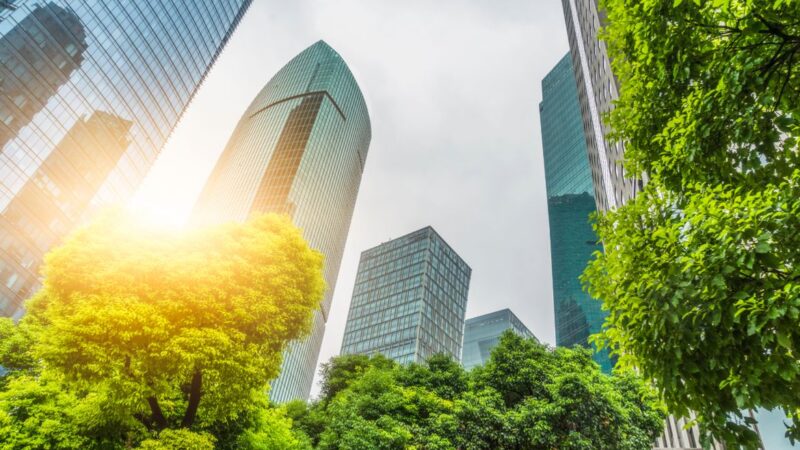
As climate change worsens deadly heat waves, policymakers begin to act
Extreme heat disproportionately harms already-vulnerable communities and individuals
As much of North America smoldered under extreme temperatures this summer, Los Angeles experienced no major heat waves. Now, the break appears to be over.
L.A. and much of California is predicted to experience the longest, most intense heat wave of the year from Wednesday to Sunday. Forecasts predict that temperatures will peak over Labor Day weekend and reach triple-digits in many parts of the state, likely breaking records and threatening the health of millions..
Extreme heat has become more common with climate change, leading policymakers to draft legislation aimed at protecting those most vulnerable to it.
“Our communities are not prepared.” said state Assemblywoman Luz Rivas, who is working on policies to reduce the impact of high temperatures. “Heat waves are getting longer and it’s getting hotter.”
In April, California released an Extreme Heat Action Plan, which outlines action steps to increase awareness of extreme heat and reduce its impact on communities. It acknowledges the disproportionate impact felt by vulnerable populations — including low-income communities and people with pre-existing health conditions.
Proposed solutions include increasing use of cool roofs and pavements that reflect high amounts of solar radiation. They also include planting shade trees and opening public cooling centers, especially in low-income areas, to provide spaces for residents to escape heat.
Rivas experienced the problem first-hand growing up in the San Fernando Valley, which, along with the San Gabriel Valley, experiences higher temperatures than the rest of Los Angeles County — surrounding mountains trap heat and block coastal breezes that keep other places cooler.
When Rivas was a child, her mother would take her to the mall to cool down on the hottest days.
“My family didn’t have air conditioning at home,” Rivas said. “Even with fans or the windows open, it was just unbearable.”
Although California laws require rental units to have proper ventilation, they do not require air conditioning — leaving residents without an effective way to cool their home. Homes in low-income neighborhoods also tend to have poor insulation and streets with less tree cover, leading to higher temperatures.
Legislation proposed last February would amend the Health and Safety Code to require that residential building owners maintain safe indoor air temperatures.
Rivas is spearheading additional policies to adapt to heat, including Assembly Bills 2076 and 2238. Assembly Bill 2238 would require California to implement a statewide extreme heat ranking system similar to those used for other extreme weather events. Assembly Bill 2076 would coordinate a statewide comprehensive approach to heat and establish a competitive grant process to fund community-level heat reduction efforts.
Enrique Huerta, legislative director of Climate Resolve, a nonprofit focused on equitable climate adaptation and advocacy, said that while the new policies are a step in the right direction, more comprehensive solutions are needed to encourage coordination among government officials and engagement with the public.
Disproportionate effects of heat
Extreme heat disproportionately harms already-vulnerable populations, including low-income families who cannot afford cooling, people of color, agricultural workers and those with preexisting health issues.
“The experience of heat is not the same in all parts of Los Angeles, and the amenities that are available for communities to cope with heat are not the same,” said Edith B. de Guzman, a Ph.D. candidate at UCLA Institute of the Environment and Sustainability.
Los Angeles residents, especially in inner-city neighborhoods, are particularly vulnerable to extreme heat due to urban heat islands — areas that experience significantly higher temperatures due to a lack of vegetation, an abundance of artificial surfaces that absorb heat, and higher levels of industrial activities that produce heat.
Heat’s disproportionate impact on poor neighborhoods is rooted in the historical practice of redlining — discriminatory government practices that withheld investment in communities with high minority and low-income populations. Such redlining was prominent from the 1930s to 1968, said Guzman, who co-founded and directs the Los Angeles Urban Cooling Collaborative, a partnership developing data-driven strategies to reduce heat in urban areas. Redlined neighborhoods are an average of five to six degrees hotter than wealthier neighborhoods in surrounding areas, and some are up to 13 degrees hotter.
For instance, a July 2006 heat wave saw temperatures reach record highs for 10 days straight, breaking 119 degrees Fahrenheit in Woodland Hills, a neighborhood in the western San Fernando Valley. The event led to 16,000 emergency room visits and 600 deaths, 90% of them from zip codes where more than 50% of households earn incomes below the federal poverty line.
“If you happen to be a low-income person who doesn’t have a cool indoor space to retire to in the evening, if you’ve just spent your entire day working outdoors or have diabetes — all of those things stack up to make you much more likely to show up at the hospital or the emergency room,” Guzman said.
Dangers of extreme heat plus climate change
Climate change is increasing both the severity and duration of extreme temperatures, leading to greater health risks and a need for more adaptation.
Each year, heat causes more deaths in the U.S. than storms, floods and lightning combined, according to the National Weather Service. High temperatures are also associated with worsening air quality, wildfires, and health risks such as fatigue, heat stroke, and respiratory illness.
But heat may be an even greater killer than official records show. The L.A. Times recently reported that deaths from heat exposure are historically undercounted: an analysis found that heat caused 3,900 deaths from 2010-2019, six times greater than the count based on death certificates.
More than 70% of California residents surveyed in a recent poll said they have been affected by extremely hot temperatures in the past five years.
“Heat can end up being the straw that breaks the camel’s back if you have underlying conditions,” Guzman said.
Underlying conditions can include old age, diabetes, medication use, neurological disorders, heart disease and obesity.
Heat waves as severe as those in July 2006 used to happen every 50 years. Now they are occurring every decade. In the 1960s, there was an average of two heat waves per year; in the 2010s, there was an average of six per year.
Humans are living in an era of extreme heat that hasn’t been experienced in the last 5 million years, Huerta said.
Until recently, the burden of dealing with heat has been placed on individuals, he added. That is changing, but not fast enough.
“We need to attack heat from every single angle, and we need to throw every single tool at our disposal at it,” Huerta said. “It’s code red. We don’t have the luxury of time.”




